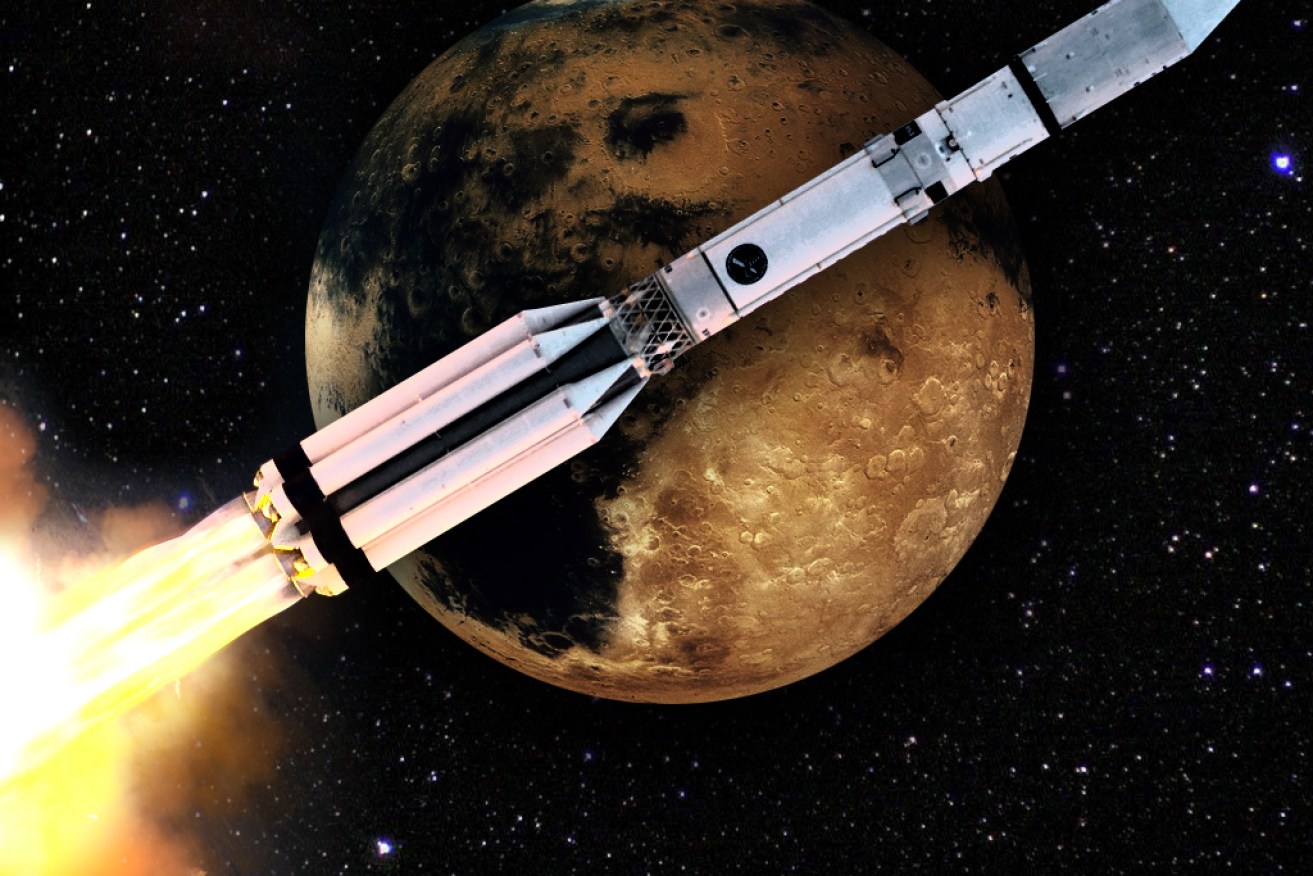Mars landing aims to find signs of life


Not all hope is lost for a Mars exploration. Photo: AAP
The European Space Agency (ESA), in a joint venture with Russia’s Roscosmos space agency, intends to land a probe on Mars next week – the first in European history.
The probe, named Schiaparelli, is part of the agency’s ExoMars Mission, launched in March 2016; an expedition to examine geological and biological activity on the surface, while another vehicle, the Trace Gas Orbiter (TGO), remains in orbit and studies the Red Planet’s atmosphere.
The lander probe is set to touch down on Mars on 19 October and, if all goes to plan, will be the first probe in ESA’s mission history to land successfully on Mars.
Combined with data from the TGO, which will attempt to pinpoint the source of gas emissions emanating from the surface, the lander’s mission is to search for evidence of methane and trace gases on the surface – a sign of active biological life.
This mission will be carried out over five years, and will form part of a longer mission that stretches into 2022 and beyond.
Every survey and exploration of Mars brings humans closer to understanding exactly what will be required to successfully land a manned mission on the planet.
It’s an ideal that has fascinated the minds of many great thinkers – from astronomers and scientists, to writers and even film directors – for hundreds of years.
Swings and misses

Mars has been a tempting mystery for space explorers for decades. Photo: Getty
It has been 20 years since Russia attempted a landing on Mars.
In 1996, the country’s Mars 96 Mission came close, but failed in the planet’s orbit.
Russia then made a second attempt, in 2011, with the Fobos-Grunt Mission – a collaboration with China – intended for the Mars moon, Phobos.
Again, the mission failed, this time in Earth’s orbit.
For ESA, 2003 marked the agency’s first mission to Mars, which sent the Mars Express Orbiter on an ‘express’ trip to Mars, thanks to the planet’s closer than ever proximity to our own.
That mission’s lander, Beagle 2, was released from Mars’ orbit, but disappeared after descending to the planet.
Once radio contact is lost and a probe stops responding to Mission Control’s attempts to communicate, it is very rare to ever hear from it again.
However, Beagle 2 was recently discovered after a NASA Mars orbiter sent back high-resolution photos taken of the Mars surface that revealed it had landed perfectly, but failed to function.
Considering the many years of preparation, planning and construction that go into any space exploration mission, there’s no doubt there’s a lot riding on the ExoMars Mission.
Race to the Red Planet

The Beagle 2 was recently found on Mars. Photo: AAP
ESA and Roscosmos clearly aren’t the first space agencies to send a probe to either survey or set foot on, metaphorically speaking, the Red Planet.
NASA has long been launching all manner of probes and lander vehicles into space to study the Martian atmosphere and geographical terrain since the ‘70s.
Up until recently, Russia had actually been sending up probes and landers even longer, since 1960, with sadly more ending in failure than success.
In fact, both the US and USSR/Russia can lay claim to all manner of probes and landers that became instant space junk after leaving earth’s atmosphere and developing a fault.
Even Japan and China have had a crack at Mars in two separate missions, both of which failed.
However, recent events have thrown Mars back into the spotlight again.

Radical entrepreneur Elon Musk aims to launch for Mars within 10 years. Photo: AAP
No, we’re not talking about the Matt Damon-helmed space rescue flick, The Martian – one high-profile private space agency, Elon Musk’s SpaceX, announcing the most ambitious plan in the history of space exploration.
SpaceX’s grand vision is to not only lead a manned mission to Mars, but also establish a colony on the planet of up to one million humans in the next 100 years.
By the way, you can be one of the first colonists for a measly US$200,000. And that’s a one-way ticket.
NASA has also drawn up plans for a manned mission to Mars in roughly 20 years, although Musk’s plan calls for a far more aggressive timetable, with the first launches expected within 10 years.








